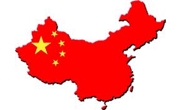Market Data

May 1, 2018
Bradford: China to Focus More on Quality than Quantity in the Future
Written by Tim Triplett
Nations all over the globe, including the United States, blame China for its wanton overproduction of steel and predatory trade practices such as dumping and intellectual property theft. But veteran steel analyst Chuck Bradford of Bradford Research in New York sees the Chinese becoming less of a threat to free trade over time. Recently back from one of his many visits to China, Bradford believes the Chinese have made a legitimate strategic decision to focus more on quality than quantity in the production of steel and other products.
He points to the past as his guide, using Japan as a case in point. In the 1980s, it was the Japanese mills that were accused of dumping steel on the world market. Japanese manufacturers were best known for making cheap transistor radios and cars that were quick to rust. Today, Japanese-made electronics and luxury cars are prized by consumers and command premium prices. Japanese steelmakers have a reputation for producing some of the finest steels in the world.
“Whenever there has been a tariff issue—and there have been attempts to protect the American steel industry since the 1960s—the way the foreign producer fought it was to go up in quality,” Bradford said. “History shows us that the way to prosper as a manufacturer, when people start focusing on trade actions, is to make your product better.”
Bradford sees China being less of a threat to world steel prices in the years ahead for a few reasons. For one, the Chinese are making a real effort to eliminate inefficient capacity, including many old induction furnace mills that pollute the environment. “The Chinese government is focusing not just on general comments about reducing capacity, they are actually naming plants that have to close and others that have to upgrade. So, there is quite a bit of activity to improve things,” Bradford said.
China’s growth is decelerating as the government strives to make its economy less dependent on exports and more oriented to internal consumption by its rapidly growing consumer class. In its forecast for 2018, the World Steel Association expects Chinese steel demand to remain flat this year.
China’s efforts to improve its abysmal record as an industrial polluter may eventually help ease its excess steel production. Chinese officials imposed restrictions on production levels by steel mills in certain regions of the country during the cold-weather heating season. Bradford is skeptical the government’s attempt to curb harmful air emissions this winter had much effect on overall production so far. It may have just shifted it to other parts of the country. Crude steel production increased by 4 percent in March as the output restrictions were lifted. “If you annualize the March figure, it comes out about the same as last year,” he noted.
Chinese government data on steel production is highly suspect, Bradford said, and in many cases it overstates the surplus of steel production in China and makes the trade imbalance seem worse. For example, the Chinese lump sales to Hong Kong into their export data. Hong Kong is part of China, so that should be recorded as a domestic sale, he said. The Chinese claim a steel production capacity of around 1.2 billion tons based on the maximum potential of their mills’ equipment. As a practical matter, factoring in real-world production bottlenecks, China most likely can produce less than 900 million tons per year, Bradford estimates. “So, a lot of the capacity our domestic steel industry is complaining about and worrying about just does not exist.”
History has shown repeatedly that tariffs and quotas don’t work, Bradford argues. They may provide a short-term benefit to certain industries, but they invariably produce a response in the market. In the latest case, the threat of steel tariffs has contributed to a 50 percent increase in steel prices. If exporting steel coils, bars and beams to the U.S. becomes uncompetitive, Chinese manufacturers will simply begin making more steel parts for cars, ships and bridges and export those to the U.S. instead.
Chinese retaliation to the U.S. tariffs has been focused primarily on U.S. agriculture interests so far, hoping to deal a political blow to the Trump administration. “The Chinese could really hurt us on the trade side if they wanted to,” Bradford said. “We need their rare earths for defense, their lithium for batteries. If they cut us off, we’ll be hurting.”
In a decade or two, if the Chinese follow Japan’s lead and seek the high ground in terms of quality, they may be less of a threat to the commodity steel market, but perhaps even more of a threat as a competitor to American manufacturing.







